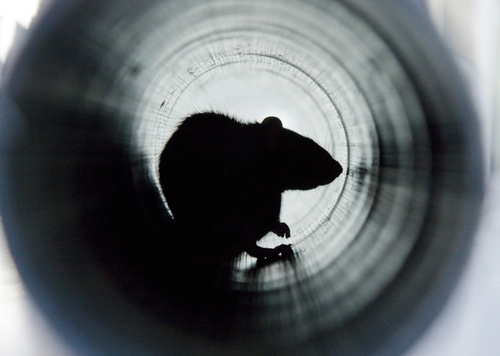Chicago continues its first-place run in the rat race in the U.S., topping Orkin’s Top 50 Rattiest Cities List for the ninth year in a row. Los Angeles moved up to the No. 2 ranking while New York rounds out the top 3 spots. Jumping up 10 spots this year is Houston to No. 20, and Greensboro, N.C., moves up 17 spots to take No. 50.

If your facility is in one of these rat-infested regions, fear not: Orkin also shared warning signs and prevention tips to help combat the health, safety, and structural issues rats and other rodents may cause.
Cities on the Rattiest Cities List are based on the number of new rodent services showcasing the demand and also indicates the efforts that residents and businesses of the top cities have taken to treat rodent issues.
Orkin ranked metro regions by the number of new rodent treatments performed from Sept.1, 2022, to Aug. 31, 2023. This ranking includes both residential and commercial pest control treatments:

Each fall, mice and other rodents invade an estimated 21 million homes in the United States. They typically enter buildings between October and February looking for food, water, and shelter from the cold.
“Rodents multiply swiftly, and when an infestation is left unattended, they can cause extensive damage,” said Ben Hottel, an Orkin entomologist. “Rats are capable of squeezing into spaces through holes as small as a quarter, which makes it especially important to seal cracks from the outside.”
Rodents can cause health issues and also severe structural damage with their strong jaws and burrowing skills. They have oversized front teeth for gnawing and teeth that are adapted for chewing a variety of items, including electrical wires, water pipes, and gas lines.
Warning Signs
Because of the threats that rodents pose, it’s important for homeowners and business owners to know how to spot a rat or mouse infestation in order to take a proactive approach in eliminating them from their homes and facilities. A few common signs of a rodent infestation include:
- Droppings: Rodent droppings are often left behind in places where food is stored, such as kitchen cabinets or pantries, under sinks, inside chewed cardboard boxes, along baseboards, and on top of wall beams
- Gnaw marks: Mice are known to bite through walls, wood, and wires. The damage to wiring within walls can increase the risk of a fire.
- Nests: Rodents prefer to nest in dark, secluded areas where there is little chance of disturbance. Be on the lookout for shredded paper products, cotton, packing materials, and other fabrics, as mice like to build nests out of these materials.
- Rub marks: Rats tend to leave dark grease or dirt marks along walls and floorboards as they follow a trail throughout the home between their nest and food.
- Strange noises: Scurrying in the walls or in the attic could mean a rodent family is present. Rodents are especially fond of attics as it’s an insulated area for nest building.
Prevention Tips
The good news is homeowners and business owners can help prevent rodent infestation troubles by taking a proactive approach in eliminating entryways into their home and business. To help avoid the potential health and safety risks associated with rodents, Orkin recommends the following tips to help keep rodents out:
- Store away food. Small crumbs and garbage are popular food sources, as are dry goods such as grains and cereals. These should be kept in sealed metal or glass containers to prevent contamination.
- Declutter. Cardboard objects prove attractive to rodents, as they tend to chew them up for use in their nests. Take time to clean and organize crowded spaces around the house or facility.
- Maintain your landscaping. Tall grass with adequate harborages, such as woodpiles next to the buildings, can be ideal habitats for rodents. Tree branches in contact with buildings can also offer rodents easy access to the upper floors where they may find a way into the attic.
- Inspect both inside and outside. Keep an eye out for rodent droppings, burrows, and rub marks along baseboards and walls. The sooner rodents are detected, the better.
- Look for possible entry points. Seal any holes and cracks that are found around your property. Install weather strips around entryways, especially under doors, to help keep mice out.
Using the tips above, homes and businesses across the nation can be better equipped to keep rats and mice out. To effectively control rodent infestations, contact a professional who can assess your situation, implement a sound solution that is designed just for your situations, and monitor for improvements over time.
ALSO READ: How to Launch an Integrated Pest Management Program
